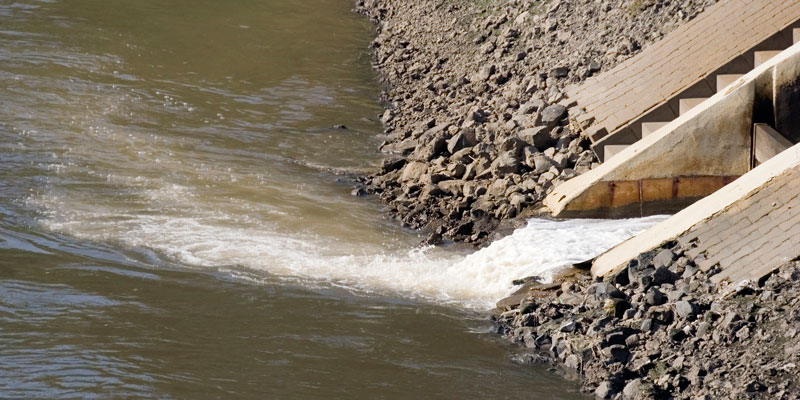Development of Treatment Wetland Technology for Rural Wastewater Management
Principal Investigators - Robert Gordon, Nova Scotia Agricultural College and Rob Jamieson, Dalhousie University (2005-2007)

Challenge
Increased regulatory pressures continue to drive the management of rural wastewater. Small sewage treatment systems serving communities of less than 50 people often present design and operational problems not encountered with large scale systems. Although the general processes used for treatment may be similar, many of the unique problems encountered with small systems are caused by the use of unsuitable technology for requirements of the situation. Basic information and recommended practices are needed for the design and operation of small wastewater management systems that are both efficient and low cost.
This research explores technologies and management strategies for cold climate aspects of water treatment wetlands in agriculture and domestic applications. The project addresses the core challenges of developing innovative techniques for storm water and wastewater management and rebuilding small scale and rural infrastructure. These research outcomes provide tools for engineers and planners designing wetland treatment systems and the agencies responsible for approving and regulating the use of alternative small scale wastewater treatment systems.
Project
The research team evaluated various low-cost wetland technologies for agricultural and domestic wastewater management. They also examined wetland design methodologies that incorporate the effects of unsteady state loadings and non-ideal hydraulics on wetland treatment performance.
One project study established a surface flow and sub-surface flow (SSF) wetland for multi-source wastewater treatment at an operational dairy farm in Nova Scotia. Researchers tested milkhouse washwater, silage leachate, solid manure runoff and domestic sewage. They found distinct differences between the processes during the summer, as E. coli NAR effluent concentrations peaked earlier for the surface flow system. Wetland performance was evaluated based on influent and effluent concentration and loadings. Retention times were evaluated by a series of dye tracer studies and k values were determined for design considerations and to determine effects of hydraulic loading rate (HLR), temperature and mass loading for parameters monitored. They found that these three parameters were major control factors for improving the treatment efficiency of a constructed wetland, and that in colder climates a longer retention time may be required. The data showed less variability in the reductions of pollutants when retention times were greater than 13 days.
Researchers then refined a wetland model of the built system using WASP7, a Windows based Water Quality Analysis and Simulation Program developed by the US Environmental Protection Agency. The team compared predicted E. coli NAR effluent concentrations with observed data, validating through multiple tests. It could then be used for optimizing the design of surface flow wetlands treating agricultural wastewater.
Outputs
- Production of a technical publication related to the design and use of treatment wetlands for agricultural wastewater treatment, with an intended audience of agriculturalists.
- Formal presentations to the Nova Scotia Department of Environment and Labour, the American Society of Agricultural Engineers Annual Meeting, and the Nova Scotia Federation of Agriculture’s Council of Leaders on wetland performance estimates.
- Development of a wetland design factsheet developed in co-operation with Agriculture and Agri-Food Canada.
- Guidance documents for constructing and managing wetland treatment systems in cold-climates;
- The construction of instrumented full scale wetland treatment facilities which can be used for demonstration/educational purposes and research activities;
- On-site Wastewater Treatment Advisory Panel. The panel is comprised of representatives from several provincial government departments (Environment and Labour, Health, Natural Resource, etc).
Outcomes
- Expansion and strengthening of a network of rural wastewater management researchers including scientists, industry, designers, trainers, and regulatory personnel nation-wide with the ability to produce outcomes relevant to all Canada.
- Increased knowledge in relation to design and use of treatment of wetlands for agricultural wastewater treatment.
- Improved wetland design methodologies which incorporate the effects of unsteady state loadings and non-ideal hydraulics on wetland treatment performance;
- An expanded and strengthened rural wastewater management research network capacity (scientists, industry, designers, trainers, regulatory personnel) throughout this country that has the ability to produce outcomes which are relevant to all Canada;
- Quantification of water quality benefits (and potential gaseous emissions) from treatment wetlands and how their performance can be optimized;
- Training of highly qualified personnel (4 graduate and 6 undergraduate students) who will have practical experience in designing, operating and evaluating wetland wastewater treatment systems.




